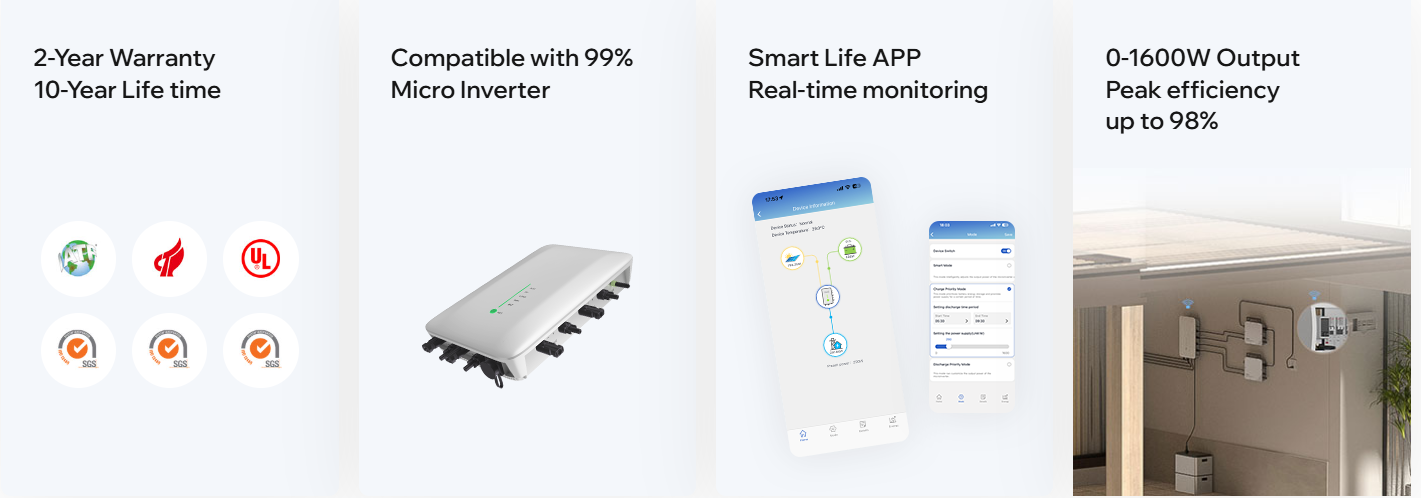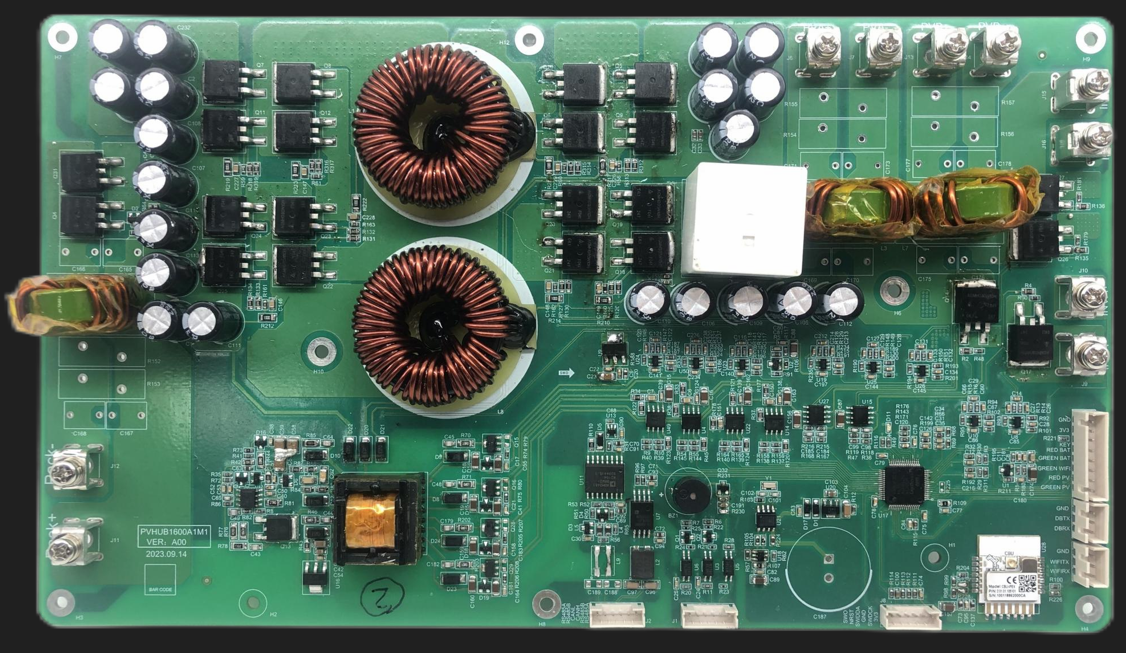PV Hub: Pros, Cons, and Options in the DE
In Germany, the growing demand for renewable energy solutions has led to the rise of innovative technologies such as PV hubs, making solar power more accessible and efficient for residential and commercial users. A PV hub is a critical component in modern solar power systems, helping homeowners and businesses manage energy generation, storage, and distribution. However, like any technology, PV hubs come with both advantages and challenges.
What is a PV Hub?
A PV hub is a central unit in a solar energy system that connects solar panels, inverters, batteries, and the grid to facilitate the generation, storage, and efficient use of solar power. The PV hub acts as the brain of the system, managing energy flows and ensuring that the electricity generated by your solar panels is used efficiently.

Key Features of a PV Hub:
· Energy Storage: A PV hub helps store excess energy produced by solar panels in batteries, making it available for later use when the sun isn’t shining.
· Inverter Integration: It integrates with solar inverters to convert the DC power from the panels into AC power that can be used to run household appliances or be fed back into the grid.
· Smart Monitoring: The use of a PV hub app allows users to track energy production, consumption, and storage in real time.
Pros of Using a PV Hub
1. Efficient Energy Management
The primary advantage of a PV hub is its ability to efficiently manage energy production, storage, and consumption. By connecting all the components of a solar power system, it ensures that solar energy is harnessed and distributed optimally.
· Energy Storage: A PV hub ensures that the energy generated by your solar panels is stored effectively in batteries. This stored energy can be used during peak demand hours or when solar generation is low, providing energy independence.
· Seamless Integration: Modern PV hubs come with built-in solar power charge controllers that regulate battery charging, preventing overcharging and prolonging the life of your batteries.
2. Reduced Energy Costs
A PV hub can significantly lower electricity bills by reducing reliance on the grid. By producing and storing your own solar energy, you can use it instead of buying power from utility companies, particularly during peak hours when electricity prices are high.
3. Smart Monitoring with the PV Hub App
Many PV hubs are integrated with a PV hub app, which allows users to monitor the performance of their solar system in real time. The PV hub app provides insights into energy production, consumption, and storage, making it easier to optimize the system’s performance.
· Track Energy Usage: With the PV hub app, you can track how much energy is being produced by your solar panels and how much is being consumed or stored. This information helps you make informed decisions about energy consumption and optimize savings.
· Remote Monitoring: The app also allows remote monitoring, meaning you can check the performance of your solar power system from anywhere, providing peace of mind and helping with troubleshooting when issues arise.
4. Compatibility with Next-Gen MPPT Controllers
Another benefit of PV hubs is their compatibility with MPPT (Maximum Power Point Tracking) technology, which maximizes the energy harvested from solar panels. With next-gen MPPT solar power controllers, PV hubs can adapt to changing sunlight conditions, ensuring that your system is always operating at its highest efficiency.
· Higher Efficiency: Next-gen MPPT controllers offer advanced optimization, adjusting the operating point of solar panels in real-time based on factors such as temperature, light intensity, and shading. This can increase the overall efficiency of your solar power system by 20-30%.

Cons of Using a PV Hub
1. Initial Installation Costs
While PV hubs offer long-term savings, the upfront installation costs can be high. Installing a solar power system with a PV hub, solar panels, inverters, batteries, and charge controllers requires a significant initial investment.
· Upfront Costs: The cost of purchasing and installing a PV hub can range from €1,500 to €5,000, depending on the size of the system and the quality of the components. This is a consideration for those on a tight budget, though the savings on electricity bills can offset this cost over time.
2. Maintenance and Repairs
Although PV hubs generally require minimal maintenance, any system that involves electrical components and batteries needs occasional servicing. The need for repairs or system upgrades could add unexpected costs.
· Battery Lifespan: If you have a battery storage system integrated with your PV hub, it may need to be replaced after a few years, which adds to the maintenance costs. Typically, lithium-ion batteries last around 10-15 years, but their performance may degrade over time.
3. Limited Space for Installation
While balcony solar systems offer great flexibility, they may not provide enough space to install a large PV hub system. This can limit energy production and storage capacity, especially for households with higher energy consumption.
· Space Constraints: In urban environments, space is often limited, and installing multiple solar panels or battery storage systems may not always be feasible, especially in apartments with small balconies or rooftops.
Options for PV Hubs in the DE Market
Germany has a well-established solar market with numerous PV hub options available for residential and commercial use. Here are some popular choices:
1. Mushroom Solar MS-PH20A-1600 PV Hub
The MS-PH20A-1600 is a high-performance PV hub designed for residential applications. It comes equipped with an MPPT solar power controller, offering maximum power tracking capabilities to optimize energy production from solar panels.
· Features:
o Next-gen MPPT technology for improved efficiency.
o Built-in solar power charge controller for battery management.
o Easy integration with smart devices via a dedicated PV hub app.
· Features:
o High efficiency with MPPT technology.
o Compatibility with various battery storage systems.
o Remote monitoring via the SMA Smart Connected app.
3. Fronius Primo
Fronius is another key player in the German solar market, offering solar hubs with integrated MPPT technology. Their Fronius Primo series is known for its reliable performance, ease of use, and excellent customer support.
· Features:
o Advanced MPPT solar power controllers.
o High compatibility with batteries and home energy storage systems.
o Smart Life app for remote monitoring and system optimization.
Is a PV Hub Right for You?
A PV hub can significantly enhance the efficiency and performance of your solar power system. By integrating components like solar power charge controllers, next-gen MPPT technology, and battery storage systems, it helps optimize energy production, reduce electricity bills, and promote energy independence. However, the initial costs and installation complexities can be a challenge, particularly in limited space or for those on a budget.
In the German market, there are numerous PV hub options, from Mushroom Solar to SMA Solar Technology and Fronius, each offering unique features and benefits. With the right system, you can harness the full potential of solar energy and contribute to the renewable energy transition in Germany.
If you're ready to invest in a PV hub, ensure you select the right system based on your energy needs, available space, and budget. With the help of MPPT technology and efficient solar power charge controllers, your PV hub can be a key part of a sustainable and cost-effective energy solution.


